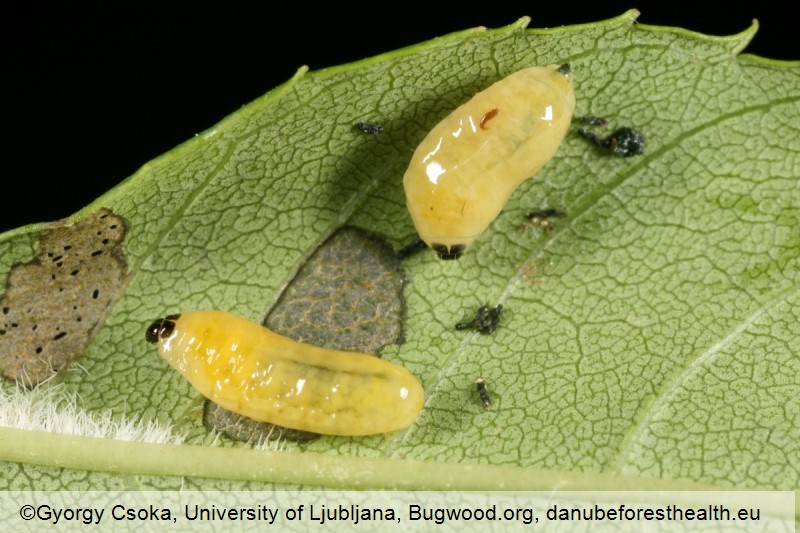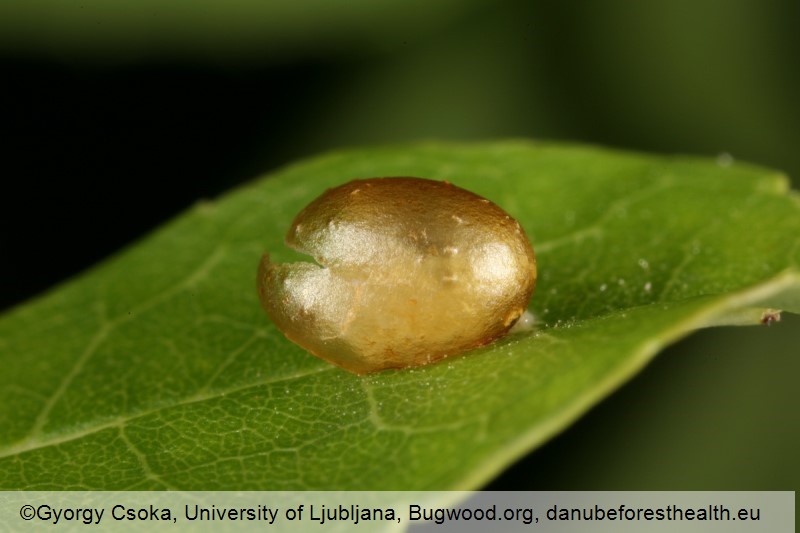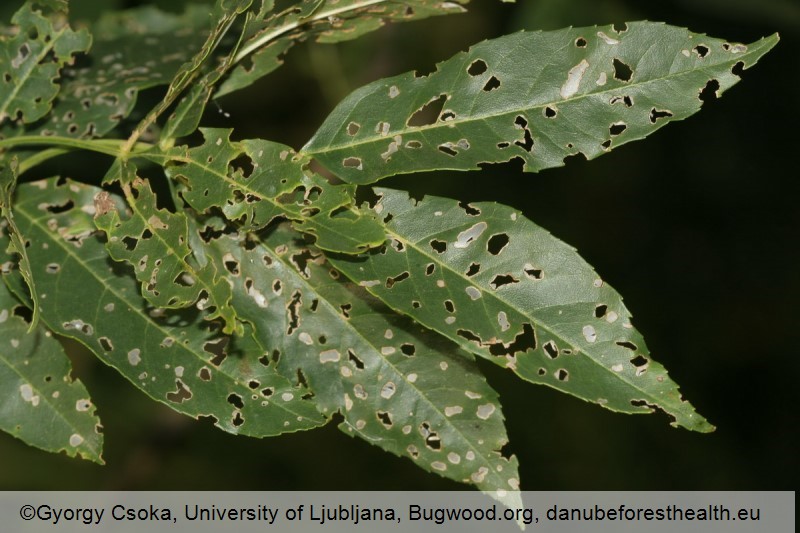Animalia
Ash weevil
Stereonychus fraxini
Maarten de Groot
|
|

Fig. 1. Adult of Stereonychus fraxini

Fig. 2. Larvae of Stereonychus fraxini

Fig. 3. Pupa of Stereonychus fraxini

Fig. 4. Feeding damage on leaves of Stereonychus fraxini
DETECTION PERIOD:
March-June, peak in April and in May/June (flight period)
DESCRIPTION:
Adults are small oval shaped black brown beetles (2.5-3 mm). Eyes are unusually positioned on the top of the head. Eggs are laid close to the veins on the underside of the leaves. Larvae are 4 mm long are yellow with black heads. The cocoons are brownish, parchment like formed on the leaf surface. The species has one to three generations.
HABITAT:
The main host of this species are ash species (mainly Fraxinus excelsior and F. angustifolia) and Phyllirea media. The adult hibernates in the litter layer. It is common in riparian forests.
STATUS:
Occurs in all countries in the REFOCuS area (Austria, Croatia, Hungary, Serbia and Slovenia).
IMPACT:
Larvae of the ash weevil are feeding on unopened buds and leaves and can defoliate the trees. This can recur yearly and therefore can cause weakening of the trees.
SIMILAR SPECIES:
Can be confused with other weevils.
|